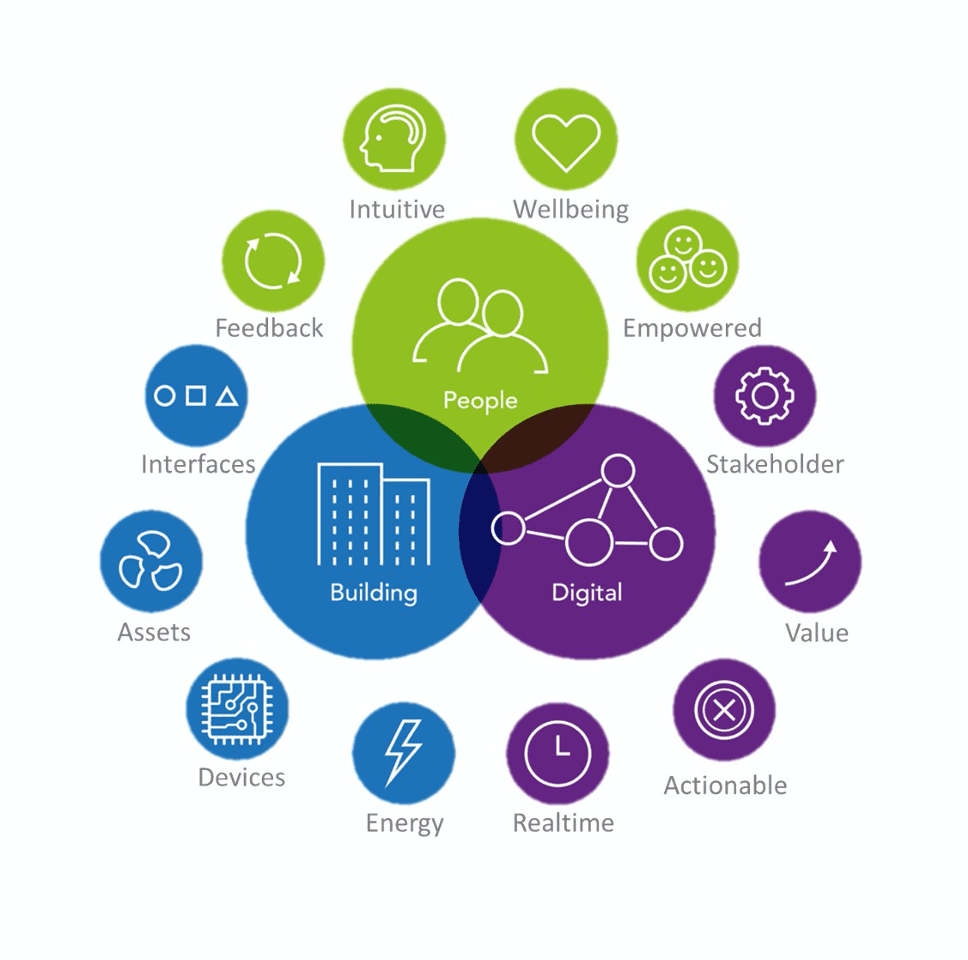Remote Building Monitoring
Remote building monitoring allows building systems and equipment to be monitored and interventions to be carried out, without the need for engineers on site. The monitoring system is linked to the building BMS and uses networked sensors to provide information on assets and the environment. This helps building managers to optimise their assets, improve energy efficiency and reduce the building’s environmental impact.
Platinum Facilities’ Q-tec solution is a direct interface with the BMS system and allows multiple points from the system to be remotely reviewed. Rules are applied to the large amount of data which is collected to capture asset performance drift, to enable valued data insights and recommendations to be provided to the engineering team on site.
Platinum Q-tec has been designed with the three key focus areas of people, buildings and data, and how these interact, and to bring improvements driven by appropriate key performance indicators. The data is presented so that it is understandable by all, tailored to suit the property, and is actionable at all levels, allowing data driven decision making.
Critical assets are monitored 24/7/365 and the Platinum energy bureau service provides clients with the reassurance that their buildings are being analysed continually, to allow operational improvements to be made. This supports compliance, business continuity planning, cost savings, building operational efficiency and reduces the need for travel to sites.

Our Approach
Optimise cooling and ventilation equipment
Modelling loads dynamically, to allow the system to spend the minimum amount of money to achieve the desired comfort level.
Match occupancy patterns to energy use
A Smart building will run leaner and save money when there are fewer people inside.
Proactive maintenance of equipment
Analysis algorithms will detect performance problems before they cause expensive outages, as well as maintaining optimum efficiency.
Dynamic power consumption
By taking signals from the energy market and altering usage in response, a Smart buildings ensures the lowest possible energy costs.
Optimise cooling and ventilation equipment
Modelling loads dynamically, to allow the system to spend the minimum amount of money to achieve the desired comfort level.
Match occupancy patterns to energy use
A Smart building will run leaner and save money when there are fewer people inside.
Proactive maintenance of equipment
Analysis algorithms will detect performance problems before they cause expensive outages, as well as maintaining optimum efficiency.
Dynamic power consumption
By taking signals from the energy market and altering usage in response, a Smart buildings ensures the lowest possible energy costs.

